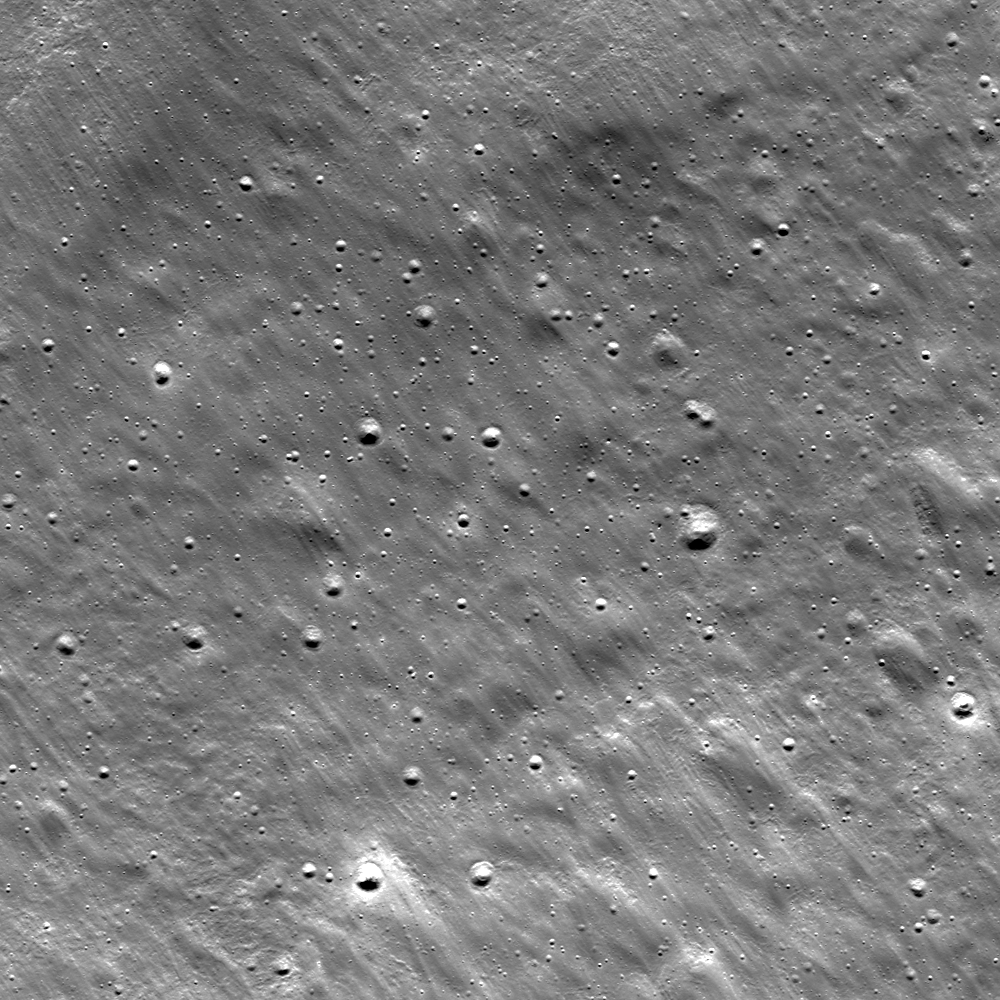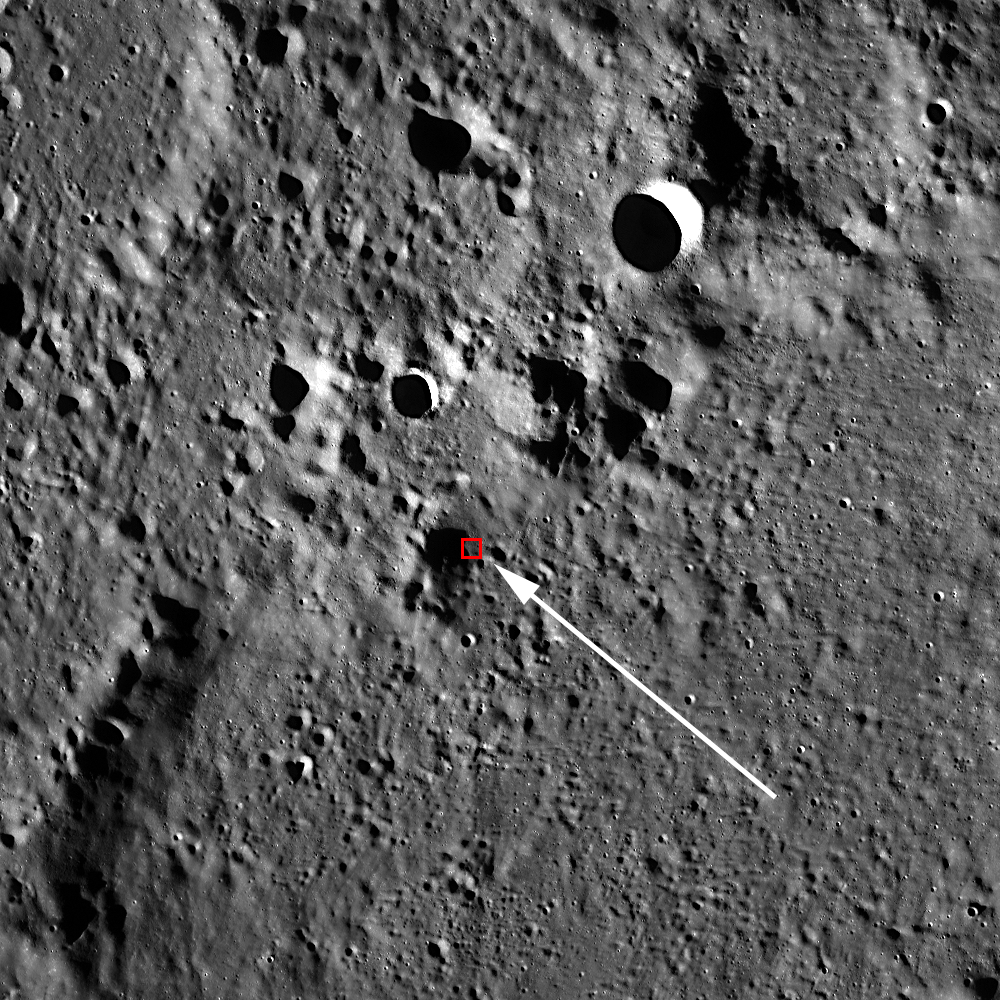
What created the chevrons in today's featured image? Chevron textures like these are secondary results of impacts. As ejecta is thrown out of its parent crater, the ejecta crashes back into the surface creating secondary craters and small linear streams of locally derived immature material. Even better, the chevrons created during this process point back towards their parent crater! These features are not scale dependent, as we observe chevrons on both small and large craters.
So if these chevrons were formed from a recent impact, where is the parent crater? The context image doesn't reveal any obvious choices, but they could be outside of this image. Try looking for potential candidates using the LROC quickmap (don't forget to change the projection for the north pole)!
Are there more ejecta deposits within the full NAC frame?
Related Posts: Ejecta Blanket
Ejecta from Van de Graaff Crater
Published by Drew Enns on 20 October 2011
